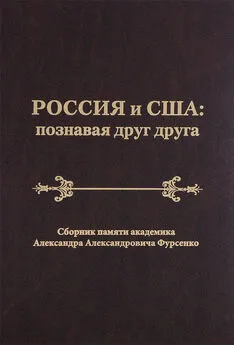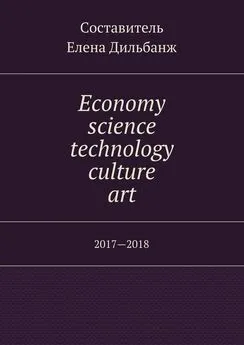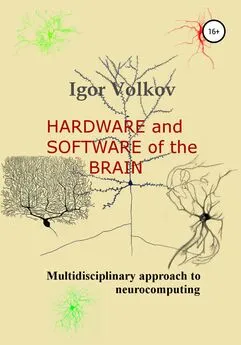Azamat Abdoullaev - Science and Technology in the 21st Century. Future Physics & Technology
- Название:Science and Technology in the 21st Century. Future Physics & Technology
- Автор:
- Жанр:
- Издательство:Литагент Selfpub.ru (искл)
- Год:неизвестен
- ISBN:нет данных
- Рейтинг:
- Избранное:Добавить в избранное
-
Отзывы:
-
Ваша оценка:
Azamat Abdoullaev - Science and Technology in the 21st Century. Future Physics & Technology краткое содержание
Science and Technology in the 21st Century. Future Physics & Technology - читать онлайн бесплатно ознакомительный отрывок
Интервал:
Закладка:
These universal properties and fundamental phenomena in need of having been expressly formulated as the basic principles of nature, namely:
I. the UNIVERSE, NATURE, THE WORLD, or THE COSMOS is UNIFIABLE and REVERSIBLE
II. FORCE, MATTER, MOTION, and ENERGY are neither created, nor destroyed, but CONSERVED, CONVERTED and REVERSED
III. EVERYTHING REVERSED IN THE WORLD, MATTER INTO ANTIMATTER and PROCESS INTO REVERSE PROCESS.
If the reversibility properties of nature and the convertibility of energy and unity of the forces of nature had been formulated as a universal principle and basic laws since the very beginning of modern physics, we'd have different physical science, more logical and systematic, predictive and productive, more esthetic and attractive, smarter or more intelligent and machine-wise.
Physical science is the base of modern technology, innovation and applications, which laws and principles are at the core of most engineering sciences and future technologies, see Supplement1.
So to create future Technology X.0, we need new physics, Physics X.0.
The State of Affairs of Physical Science
Physical science is traditionally defined as the natural science doing the systematic study of the inorganic world, as being completed with the life science of biology doing the systematic study of the organic world.
Its subject is treating of the general properties of matter as a whole, its composition and structure, properties and states, energy and force-relations to formulate the first laws of behavior of the universe and nature basing on natural ontology and mathematics, as divided among four interrelated branches:
Astronomy
Physics
Chemistry
the Earth science
Astronomy
Astronomy, including astrophysics and cosmology, studies the entire universe beyond the Earth, including the universe’s structure and evolution, its cosmic objects (as stars, galaxies, planets, moons, asteroids, comets and nebulae) and their physical processes (as supernovae explosions, gamma ray bursts, and cosmic microwave background radiation, etc.), and how the Earth relates to interactions with the solar system.
Chemistry
Chemistry treats of the structure, composition and properties of substances and all possible changes, transformations or reactions they undergo, being about the properties and reactions of molecules. It is about the interactions of substances through chemical reactions to form different substances, including analytical chemistry, inorganic chemistry, organic chemistry, biochemistry, polymer chemistry, physical chemistry, and industrial chemistry.
The Earth science
Earth science is dealing with planet Earth, how the natural environment (ecosphere of geosphere and biosphere or Earth ecosystem) works and evolves, including the study of the atmosphere, hydrosphere, lithosphere, and biosphere, involving atmospheric science and environmental science, geology and geography, geoinformatics, glaciology, oceanography and soil science.
Physics
The core of physical science, physics, deals with the structure of the matter and the interactions of the fundamental constituents of the universe, including all the hypothetical constructs like as “dark energy”, “dark matter”, or “dark force”. It is the science that treats of matter and energy, forces and interactions and their regularities and laws governing the reciprocal interplay while being tested and proved by analysis and observation, control and measurement.
Mathematics
Mathematics, as the key tool of natural science, is emerging as the abstract science of structure, order and relationship. As applied mathematics, mathematical physics has to generate a complete and consistent representation of nature as the system of natural entities, forces and changes, the total sum of material existences and forces in the universe, all in terms of mathematical systems of definitions and axioms, rules, as the function rule, principles, as duality, and theorems, deduced laws.
Natural Ontology
Natural ontology is the study of the universe as such, the basic features of all the universe, as the nature of force, matter and energy, space and time, natural entities and cause-effect relationships. As an example, mathematical and theoretical physics is to combine physics, mathematics and theoretical ontology of nature. Or, the unity of the all forces of nature is an ontological axiom.
Therefore, despite seeming differences, all the physical sciences are interrelated by the basic principles underlying all natural processes, phenomena and interactions, provided by the principal natural science of physics.
Modern Physics: Its Key Subjects and Principles
“Physics has evolved and continues to evolve without any single strategy”, while its ultimate goal to find a unified set of principles and laws governing force and energy, matter and change, at micro-, meso– and macro-world ( Physical Sciences, the New Encyclopedia Britannica, 25, Knowledge in Depth, Chicago-Toronto, Encyclopedia Britannica, Inc., 1994 ).
Generally, the key achievements in physical science lie in the serendipitous and intuitive and ingenious discovering of empirical physical laws and effects, subatomic entities, symmetry principles, conservation laws, or unified force fields (See Supplement 1. All Nobel Prizes in Physics. Available: https://www.nobelprize.org/nobel_prizes/physics/laureates/ ) .
Modern physics was founded as an empirical synthesis of separate sciences: mechanics, optics, acoustics, electricity, magnetism, heat and studies of matter and its properties.
Meantime, the whole idea of physics consisted in the intuitive understanding that different forces of nature and forms of energy are INTERRELATED and INTERCONVERTIBLE, but these universal phenomena have never been expressly formulated as the basic laws of nature. The Faraday’s intuitive belief in the unity of the forces of nature, or that all the forces of nature are but manifestations of a single universal force and must be convertible one into another made possible the classical electromagnetic field theory, the foundation of modern physics.
Modern physics includes the subjects of gravitation, mechanics and sound, particles and atoms, thermodynamics and heat, electricity and magnetism, light and electromagnetic radiation. Its main task is the nature, origin, actions and interactions of force-fields, gravitational, electromagnetic and nuclear, the strong color force between quarks and the weak nuclear interactions, all mediated by the quanta exchange, as vector gauge symmetry bosons.
In all, modern physics viewed as natural science doing the general analysis of nature to understand how the universe behaves, while being in the space of force fields and relying on a few simple laws and principles of nature and the universe.
Among the fundamental principles, causes and theories of the universe there are
unity and diversity,
reversibility and convertibility,
regularity and order,
symmetry and conservation,
change and motion,
relativity and space and time,
mass and energy,
fields and forces,
as well as thermodynamics, equilibrium and nonequilibrium, classic and statistical,
mechanics, classical and statistical, quantum and relativistic, field theory, nonlinear dynamic systems theory, quantum gravity, or theory of everything.
The fundamental axioms and postulates of physics are that “all is relative”, interrelated and interacted, in the physical universe, space and time, mass and motion, energy and force, but the basic principles and laws, as reversibility and convertibility, symmetry and conservation .
The symmetry concept and its symmetry operations, what led the natural philosophy of Newton and defined relativity and quantum theory, are mutually related to the conservation concept and its laws of invariances. Each conservation law (of energy or momentum or mass-energy, quantum numbers or baryon number and lepton number) has a corresponding symmetry, or invariance and uniformity (as time reversal or space inversion or parity and internal symmetries).
And all is generally specified by the algebraic concept of symmetry groups, as Lie and finite groups, going as the foundation for the fundamental theories of modern physics. The idea is to further unify the electroweak forces with quantum gravity forces transmitted by the massless quanta of gravitons.
Most of modern theoretical physics is about the types of symmetries of the Universe and finding the invariants (under all the symmetries) to construct field theories as its general models, like as the Standard model of CPT symmetry. It is to describe the fundamental forces and fields predicting that the exchanged particles called gauge bosons are the fundamental means by which forces are emitted and absorbed.
New Physics: From the Elemental Forces to the Prime Proto Force and Inverted Universe
In modern physics, all of the forces in the universe are based on four fundamental interactions: the strong and weak forces as nuclear forces acting at very short distances and responsible for the interactions between subatomic particles; the electromagnetic force acting between electric charges, and the gravitational force acting between masses, as the Earth-body system.
All of the forces in the universe are tended to be interrelated and united as a single super symmetrical force or supra power, one proto force. The idea of force as pervading all space and matter revolutionized Newtonian physics of classical mechanics. In 1820, Orsted made a critical discovery guided by his firm belief that chemical affinity, electricity, heat, magnetism, gravitation and light are simply manifestations of the basic forces of attraction and repulsion. The unified field theory of a single fundamental force had fully occupied Einstein for 30 years.
The weak and electromagnetic forces are already manifestations or expressions of a more fundamental electroweak interaction. A Grand Unified Theory (GUT) is to relate the electroweak interaction with the strong force of QCD.
Theories of everything are to integrate GUTs with quantum gravity theories, which include string theory, loop quantum gravity, or twistor theory, looking for a graviton or the time-space quantum properties to close the Standard Model list of force particles. Which are force carriers or messenger particles of underlying fields, such as photons mediating the interaction of electric charges, gluons mediating the interaction of color charges, hypothetical gravitons for gravitation, or virtual gauge bosons interacting with matter particles, fermions, attracting and repelling each other.
If electroweak unification occurs just at around 100 GeV and grand unification, at 10 16GeV, the unification of the GUT force with gravity is expected at the Planck energy, with a proto force particle, say, the prime force particle of God, at 10 19GeV.
Some theories beyond the Standard Model include the modern cosmology forces: an inflationary force and dark energy, a hypothetical fifth force, the search for such a force is an ongoing line of experimental research in physics. In the super symmetry theories, there are scalar fields such as quintessence or moduli, dynamic quantities whose energy density can vary in time and space, acquiring their masses through super symmetry breaking to exchange new forces. New forces might account for the recent discovery of the universe expansion accelerating, or gravitational repulsion , a nonzero cosmological constant, vacuum energy, some changes of general relativity, as well as CP violations, dark matter, dark flow, or dark energy, having a strong negative pressure (acting inversely repulsively), with a view to come to a dynamically reversible cyclic model of the universe.
Читать дальшеИнтервал:
Закладка:









